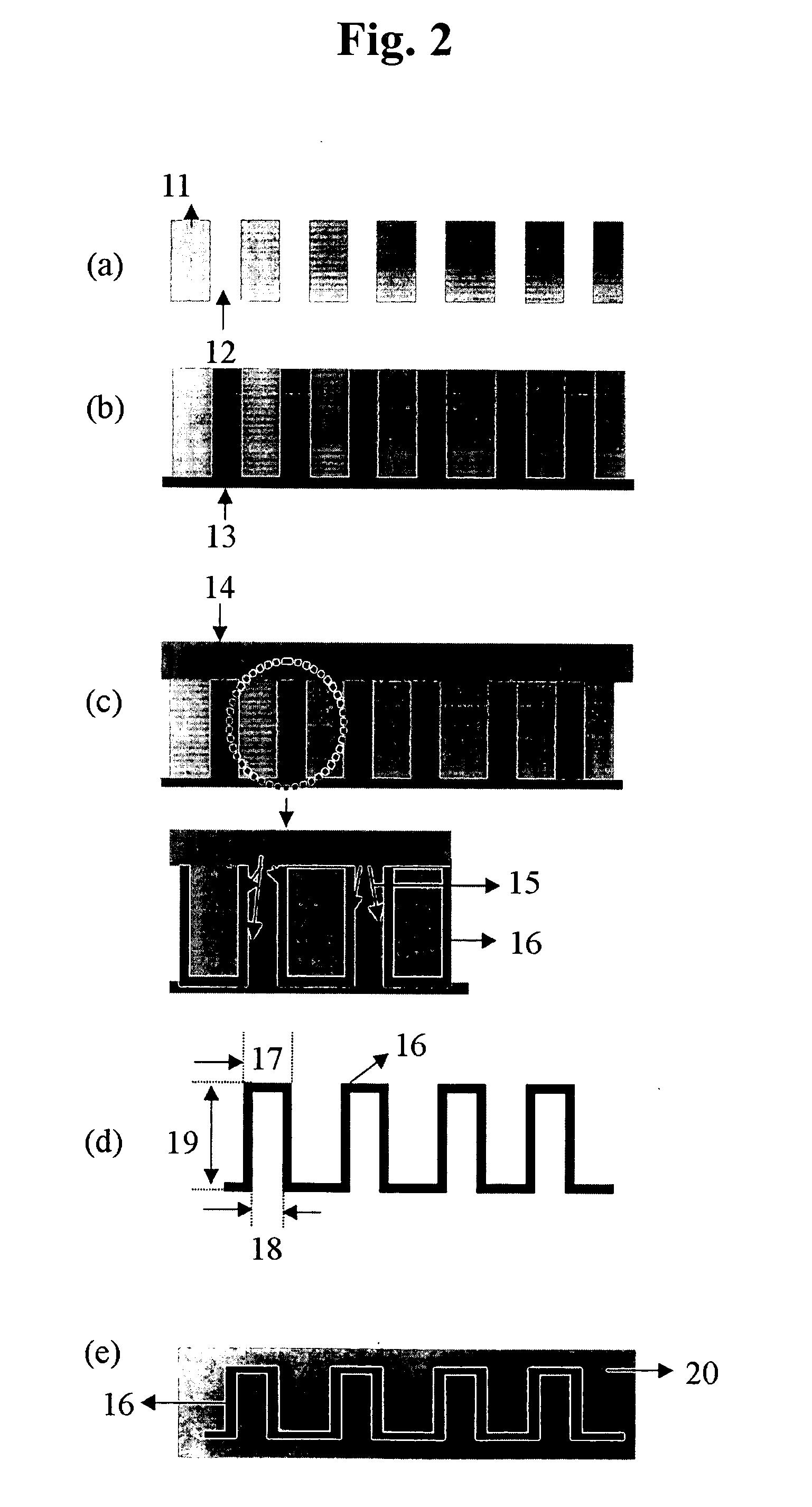Efficient 3-D nanostructured membranes
a nanostructured membrane and efficient technology, applied in the direction of membranes, filtration separation, separation processes, etc., can solve the problems of low permeability, difficult to achieve the module having a lightweight and small size, and reduce selectivity, so as to achieve high performance, and high permeability and selectivity.
- Summary
- Abstract
- Description
- Claims
- Application Information
AI Technical Summary
Benefits of technology
Problems solved by technology
Method used
Image
Examples
example 1
[0030] The gas separation membrane of the present invention was fabricated by using the template method as shown in FIG. 2 in this example.
[0031] First, a porous polymer membrane (11), as a template made with polycarbonate having the pores (12) with the diameter of 100 nanometers, was carefully placed on 0.2M of an aqueous solution of FeCl3 (13) as an oxidizing agent. The pores were filled with the aqueous solution of FeCl3 due to a capillary phenomenon and thereafter 0.2 M of a pyrrole monomer solution (14) in n-hexane was slowly poured over the aqueous solution of FeCl3. The pyrrole monomer was slowly diffused through the aqueous solution of FeCl3 at the interfacial surface of the solution (13) and the solution (14), thereby forming the polypyrrole layer on the porous polymer membrane (11).
[0032] After polymerization for about 10 minutes, the resultant membrane was washed with methanol and ultra pure water. The porous polymer membrane (11) used in the polymerization was then rem...
example 2
[0035] The gas separation membrane was prepared by the same method as described in Example 1, except that the polypyrrole separation membrane of nanotube type having an outer diameter of 600 nm and the thickness of 100 nm was prepared by using the porous polymer membrane having the pores of which diameter is 600 nanometers.
[0036]FIGS. 4a and 4b are scanning microscope photographs showing the surface and cross-section of the separating layer prepared by Example 2, respectively.
example 3
[0037] The gas separation membrane was prepared by the same method as described in Example 1 except that the polypyrrole separation membrane of nanotube type having an outer diameter of 1,000 nm and the thickness of 200 nm was prepared by using the porous polymer membrane having the pores of which diameter is 1,000 nanometers.
[0038]FIGS. 5a and 5b are scanning microscope photographs showing the surface and cross-section of the separating layer prepared by Example 3, respectively.
PUM
| Property | Measurement | Unit |
|---|---|---|
| diameter | aaaaa | aaaaa |
| thickness | aaaaa | aaaaa |
| outer diameter | aaaaa | aaaaa |
Abstract
Description
Claims
Application Information
 Login to View More
Login to View More - R&D
- Intellectual Property
- Life Sciences
- Materials
- Tech Scout
- Unparalleled Data Quality
- Higher Quality Content
- 60% Fewer Hallucinations
Browse by: Latest US Patents, China's latest patents, Technical Efficacy Thesaurus, Application Domain, Technology Topic, Popular Technical Reports.
© 2025 PatSnap. All rights reserved.Legal|Privacy policy|Modern Slavery Act Transparency Statement|Sitemap|About US| Contact US: help@patsnap.com



